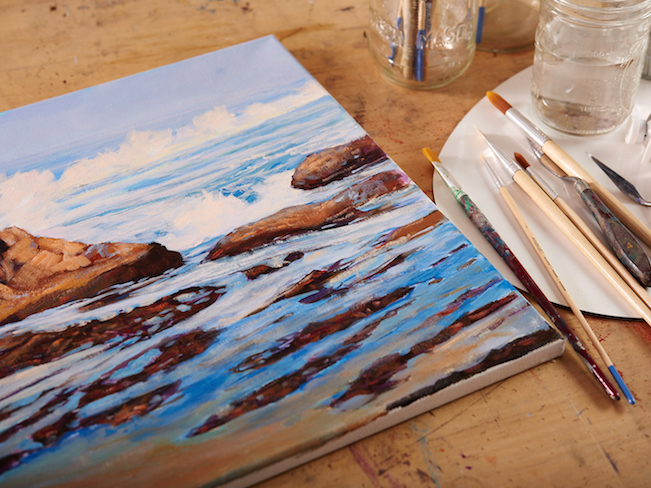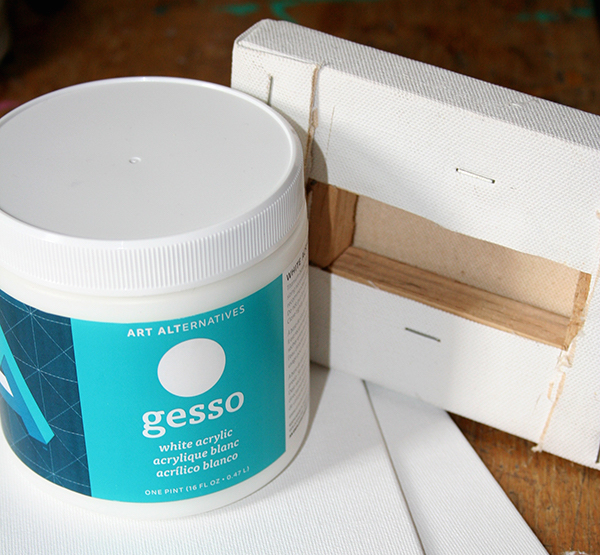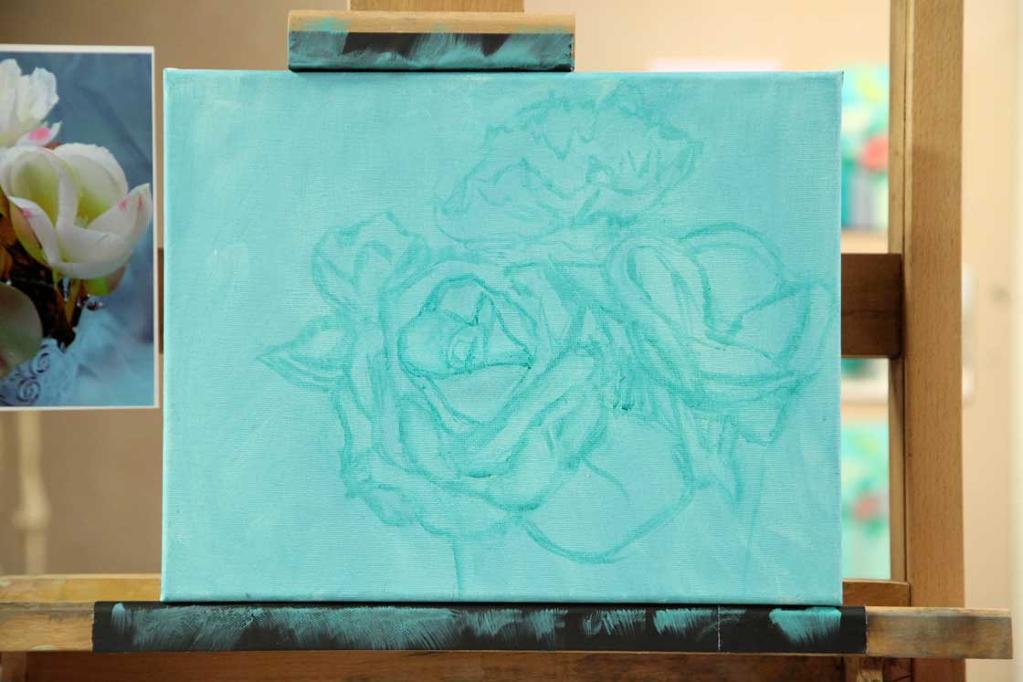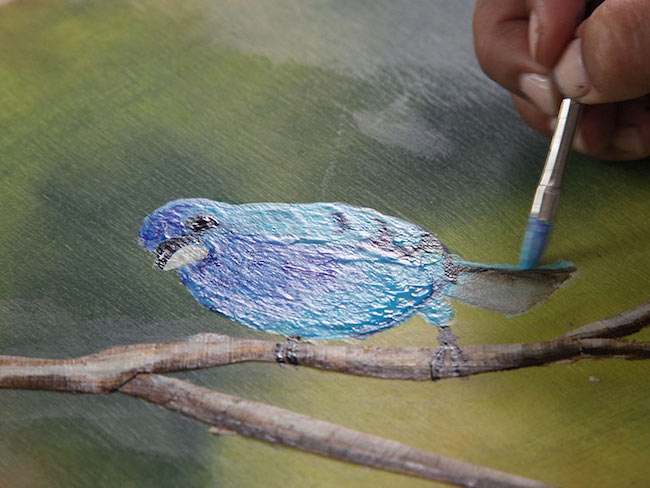A blank canvas is a great opportunity, but it can also be a source of stress. Even if you're full of ideas about what to paint, how should you go about it, exactly? These tips for painting on canvas will set you on the right track.

Canvas is a heavy-duty woven fabric that is used in a variety of ways, from sails to backpacks to marquees. In the painting world, it's usually stretched on a wooden frame. You can purchase pre-stretched canvases or stretch your own.
Canvas is a wonderful surface for painting with acrylic and oil paint, as it is sturdy, lightweight and affordable. When treated with gesso, it is also archival.
These eight tips for painting on canvas will be invaluable to beginners, but even seasoned artists might discover something new.
1. Prepare your canvas

Stretch your canvas or use a pre-stretched canvas. Not to be too obvious, but I have witnessed people purchasing canvases and starting to paint before unwrapping them. So... yes, unwrap the plastic from your canvas.
The next thing you'll want to do is prime your canvas. Often, this is done with a substance called gesso, which comes in varieties that can be used with acrylic, tempera or oil paint. Think of gesso like primer when painting rooms in a house. Gesso protects the fibers of canvas, making your painting surface archival. It also makes the work surface a little bit softer for paint, which can help you use less paint to create your work of art and will also protect your brushes.
2. Set the mood with a tonal background color

In addition to gesso, you can consider applying an all-over tone to your canvas to instantly set a mood in your painting. For instance, a bright white canvas might not be conducive to a moody, stormy painting, but a coat of a light bluish-gray can give you a more moody surface for creating your desired look.
3. Set up your canvas and supplies

How are you going to paint — physically? Do you prefer an easel, where the canvas can be upright or at a slight angle? Or do you work better with the canvas on a flat surface, right next to your palette?
There's no right or wrong, but you'll make your life and painting much easier if you set up your workspace in advance. Have your paint brushes, palette knives, water and any other painting supplies you think you'll need at the ready. The small amount of time it takes to assemble this "mise en place" will make the painting process far more pleasant.
4. Choose appropriate brushes

Certain brushes are better for canvas painting than others. For instance, your delicate watercolor brushes will get eaten alive on the sturdy canvas surface: they're too soft and delicate to apply paint assertively. In general, specifically designed acrylic or oil paint brushes will be a better choice, with longer handles and stiffer bristles which both hold and spread the thicker paint better on canvas.
5. Create an underpainting

Since canvas is typically used for opaque paints, it's a great opportunity to experiment with underpainting. This is a method of creating an outline, often in an opposing color, that can add depth to your finished piece even if it won't be directly visible once you're finished.
6. Adjust colors appropriately
While oil paints will dry about the same color as they look when applied, acrylic paint will dry slightly darker than it looks while you're painting. Adjust your color mixes accordingly so that the finished piece isn't darker than you want it to be. You can test the end result before you take paint to canvas by painting a little bit of a color a piece of scrap paper and seeing how dark the swatch dries.
7. Experiment with a medium

Painting on canvas is a great time to play around with a medium. A medium can be added to acrylic or oil paint to create cool effects in painting, many of which are specifically intended for use on canvas. There is a variety to choose from, ranging from oil paint media which can make either a high-gloss or matte finish to acrylic media, which can add body, gloss or texture to your finished painting.
8. Have a safe space for your canvas to dry
Even small canvases can prove unwieldy when wet. Be sure before you even start painting that you have a safe spot for the canvas to dry. Be very mindful if setting it to dry on newsprint or paper, as even the slightest touch to the paint can cause sticking and messy cleanup. A non-stick surface is great, if possible.

Love to learn more about blending acrylics
I love to learn it
what's the necessity of an underpaint?
Absolutely love the underpainting tip! Adding depth with opposing colors sounds like pure artistic genius. Can't wait to try this on my next canvas. Thanks for the tips! And speaking of inspiration, I stumbled upon some amazing artwork at https://miguelcamarena.com/collections/gallery-collection.
how
If I buy a canvas already gessoed prepared do I still gesso the canvas?
Beginner, your site looks supportive
can you recommend a drawing or art book to copy out on canvas some ideas for paints please and what l would initially need to get going . Finally what brand of acrylic paints are good to buy - I live in the UK (England) many thanks Cindy
Good